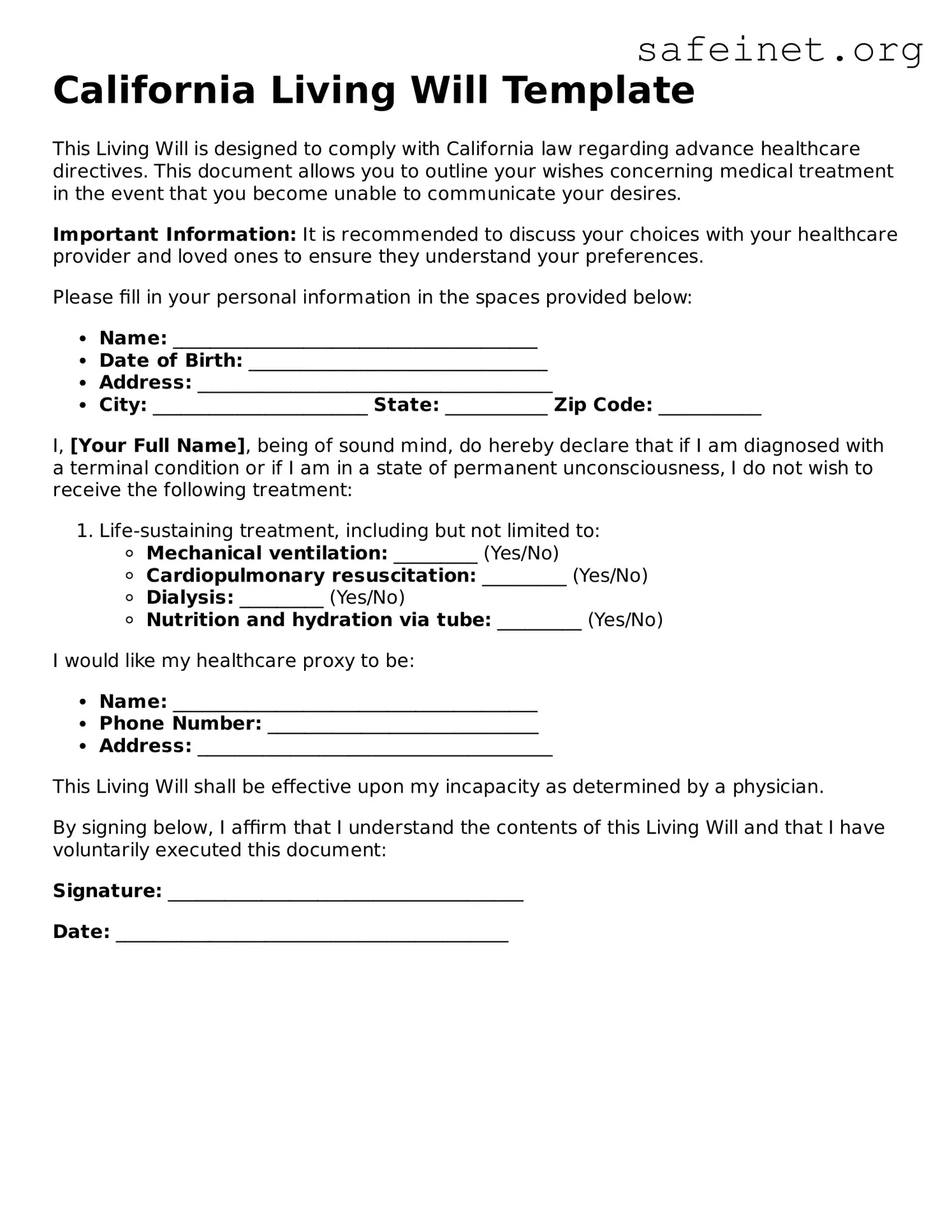What is a California Living Will?
A California Living Will is a legal document that outlines an individual's preferences for medical treatment in the event they become unable to communicate their wishes. This includes decisions about life-sustaining treatment and other medical interventions that may be necessary during critical health situations.
Who should consider having a Living Will?
Any adult over the age of 18 should consider creating a Living Will. This document is particularly important for individuals with chronic illnesses, those undergoing significant medical procedures, or anyone who wishes to ensure their values and preferences are honored in medical emergencies.
How do I create a Living Will in California?
To create a Living Will in California, you should first review your options about medical treatment preferences. Next, complete a Living Will form, which can be found through official state resources or legal services. After filling out the form, it is crucial to sign it in the presence of a witness or notary public to ensure its validity.
Can I change my Living Will once it is created?
Yes, you can change or revoke your Living Will at any time. It is important to communicate any changes to your healthcare providers and to those who are aware of your original wishes. Documentation of the updated preferences should be signed and witnessed to maintain its legal standing.
Does a Living Will cover all medical situations?
A Living Will specifically addresses preferences related to life-sustaining treatments but may not cover every medical scenario. Complex decisions about other types of care may require additional documents, such as a Durable Power of Attorney for Health Care, to ensure comprehensive direction regarding medical decisions.
Who should know about my Living Will?
It is essential to inform family members, trusted friends, and your healthcare providers about your Living Will. Ensuring that key individuals are aware of your wishes can help avoid confusion and facilitate decision-making during medical emergencies.
Is it necessary to have an attorney to create a Living Will?
No, it is not necessary to consult an attorney to create a Living Will. However, seeking legal advice may provide additional clarity and assurance that the document meets all legal requirements and accurately reflects your wishes.
What happens if I do not have a Living Will?
If you do not have a Living Will and become unable to express your wishes, medical decisions may fall to your family members or healthcare providers, who may not know your preferences. This situation could lead to conflicts or treatments that do not align with your values, emphasizing the importance of documenting your wishes ahead of time.
Can I access my Living Will after it is completed?
Yes, you should keep a copy of your Living Will in a safe but accessible location. Additionally, it is advisable to give copies to your healthcare providers and discuss your wishes with them to ensure they are aware of your preferences when needed.
